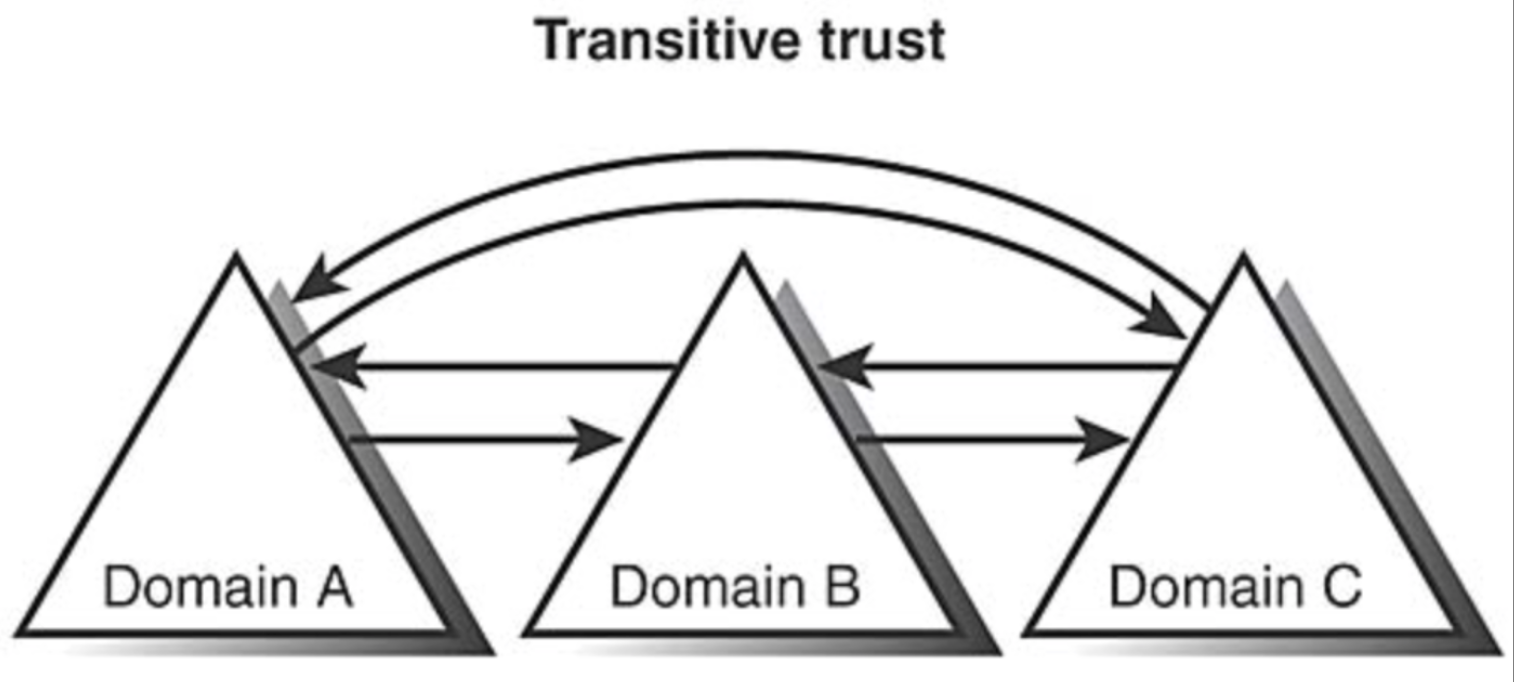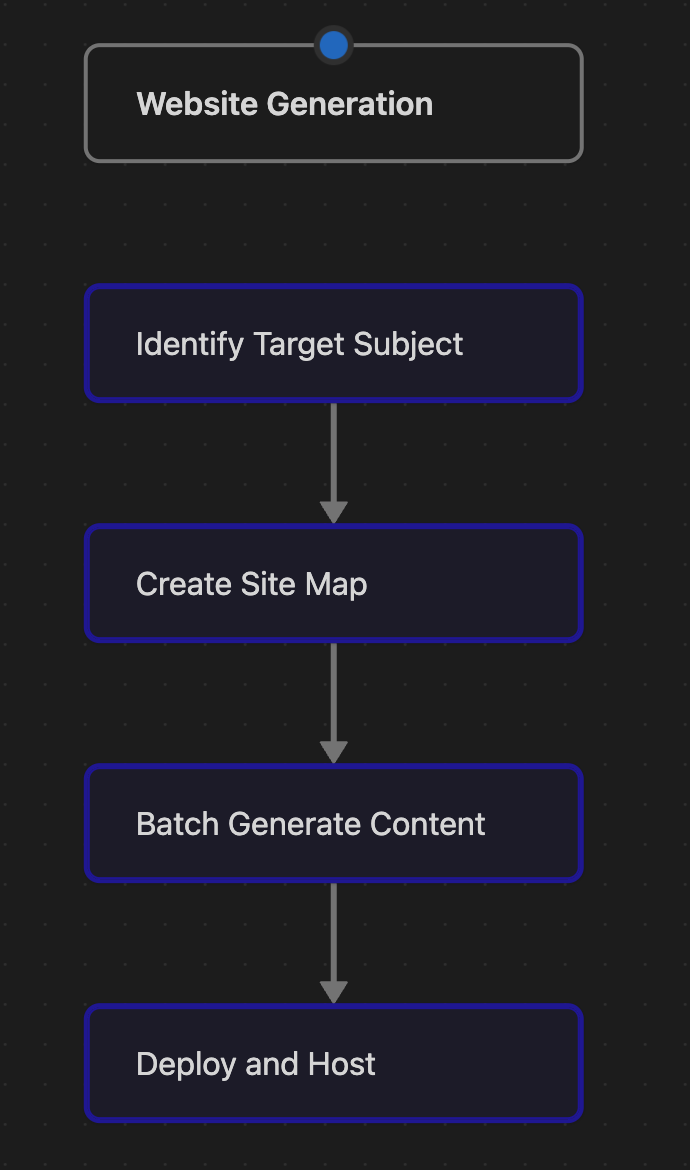- Published on
The Dawn of AI Powered SEO Automation
- Authors

- Name
- Vaut
- @V_aut_

If you'd like an intro to Search Engine Optimization (SEO) before diving into exploring automation - start here.
SEO Automation
SEO automation is the process of using technology to streamline and optimize the various components of search engine optimization. New developments in AI are revolutionizing the depth with which SEO can be automated. Most notably, content creation is being entirely redefined by the rise of generative AI frameworks such as large language models (LLMs) for text and stable diffusion for images. High-quality, SEO-optimized site content can now be produced with the click of a button - quickly and at scale.
For our exploration of SEO automation we will focus on Google's web search. Specifically, how modern technology, augmented by generative AI, facilitates programmatic end-to-end creation of search engine-optimized websites on any given subject.
Automating the Three Pillars of SEO
Optimizing content for search discoverability revolves around three main pillars: website quality, content quality, and backlinks. We will be taking a look at all three of them through the lens of automation.
Website Stack:
Google prioritizes delivering a swift and dependable browsing experience to its users. Therefore the technical stack of your website significantly influences its visibility in search rankings. A robust and efficient website ensures a faster, more responsive search result that Google is more likely to favor.
Automation: Addressing the website stack is arguably the most straightforward component to address programmatically. Reusing a streamlined template built on a contemporary web framework can greatly expedite the process of reproducibly spinning up informational websites. An excellent example of such a template is the Next.js blog by @timlrx. Its lightweight design and adaptability allows us to launch an army of clone sites, each benefiting from the swift loading times and high performance that modern web technologies offer.

Content - Topical Authority and Content Structure:
Google seeks to respond to user search queries with comprehensive, high-quality content. Search engines assess a website's authority on a topic by examining the depth and breadth with which it covers its subject. Ensuring that a site addresses all relevant subtopics and interlinks them effectively (i.e. has built a comprehensive topical map) affirms its authority on a given topic - and hence makes it an quality search result worthy of the user's attention.
Automation: Content is where generative AI is turning the world on its head.
The written content and page structure can be optimized to mimic the sites that currently rank best. Tools such as SurferSEO are instrumental in identifying pertinent keywords and determining their optimal frequency within your content. Integrating these insights into your content creation process through tailored GPT prompts further refines the quality and relevance of your content.
Furthermore, we can use tools like ChatGPT to generate a structured outlines of relevant subtopics within your niche. This can produce a blueprint for the topical map of your site in seconds, guiding the way you structure, segment and interlinkage information. Platforms like Incomestreamsurfers.com's custom GPT offer insights into how to feature information on your site to ensure a thorough coverage of your target.
The use of generative AI massively reduces the time involved in producing site content. The writing of a site that would have required a month's worth of diligent writing in the past can now be generated in optimized fashion within an hour. The boost in efficiency is unreal.

Backlinks:
Backlinks are links from third-party websites to your own. They play a pivotal role as an authority indicator in Google's evaluation system. Search engine trust is transitive, meaning that it extends trust to sites endorsed by other sites it already trusts.
That is, if Google trusts you, and you trust me, Google will trust me as well

Building backlinks is a crucial element of any SEO strategy and involves deliberately increasing the number of these external links. Specialized agencies, like Stewart Vickers' SEO Jesus in London, provide expert backlink building services. They secure links from reputable third-party sites, thereby enhancing the client's website authority in the eyes of Google.
Automation: Backlink building presents intricate challenges for programatic approaches.
The first strategy that comes to mind is building an army of clone sites all pointing at the site you'd like to boost with backlinks. Suppose you create 100 clone sites, all pointing a link to a primary site with the intention of supporting its backlink profile — does this constitute effective link building? It's a double-edged sword. While it technically increases the number of backlinks, Google may not value these links highly if the originating sites lack robust SEO pillars themselves. In the worst case it might even punish your site for being associated with empty clones.
Yet, the scenario changes if these 100 support sites are themselves search engine optimized. If you can establish the credibility of these supporting sites, Google is likely to extend some level of trust to your primary site through them.

I know what you are thinking - how could these sites even start to be search engine optimized if we just created them out of thin air and are therefore lacking the very backlinks they are meant to provide?
That is a great question. And the answer is - we'll have to see. My own clone sites haven't been around long enough to get a concrete empirical answer quite yet.
The complexity of link building strategies increases when considering the need for backlinks of these supporting sites. In theory this could lead to a potentially infinite regression of clones, pointing at clones, pointing at you. This gives rise to a form of recursive link building and is reminiscent of the existing SEO tactics of private blog networks and tiered link building.

In reality, genuine credibility arises organically over time when people start noticing the quality your site's content and start linking to it. A quality link buildingstrategy focused on getting links from high-authority sites elevates your position in the search the longer you keep at it. Unsurprisingly, this is a time-intensive endeavor -- hence making the age of a page an important ranking factor in Google's site evaluation algorithm.
That said, it's an interesting experiment to spin up programmatically-created sites to get indexed by Google and mature into a trustworthiness through strong SEO fundamentals and age. Over time, some of these sites may begin to rank well and even attract significant traffic. CTRify explores this concept as a business, demonstrating the potential of well designed, automated sites in the wild west of search results.
Automation Pipeline
So, how can you build this yourself?
Content Generation Process
To create an SEO-optimized article, follow these steps:
- Select a Target Topic: Identify the main subject for your content.
- Generate Content: Use LLMs and stable diffusion to generate content that meets the desired linguistic criteria (like keyword density) and formatting requirements (such as header distribution, word count, and inclusion of images).
- Optimize content: Review and refine the generated content to align with successful SEO practices. While LLMs are efficient, they may not fully adhere to instructions - in my experience they follow roughly 70% of a well-crafted article generation prompt. The surferSEO content editor is an excellent tool to start getting a feeling for content optimization.
Content generation should then be integrated into your site generation pipeline.
Website Generation
- Identify a Site Topic: Establish the main subject for your website. If you already have a clear purpose, that's perfect. If not, utilize tools like Ahrefs and SurferSEO's keyword explorers to find topic clusters with good traffic and monetization potential.
- Create a Site Map: Outline all the subtopics necessary to provide a comprehensive understanding of the main topic. Feel free to use ChatGPT to brainstorm this map and refine it to your liking.
- Batch Generate Content: Produce individual articles for each topic identified in your map, as previously detailed. Ideally, you'll want to bake in linking between relevant pages on your site into the generation process to avoid having to go back and manually interlink them later.
- Deploy and Host Content: Publish all content as pages of your site and deploy it. This can be done by exporting them to a wordpress blog, or by placing them into a lightweight SEO optimized blog template to be easily deployed on your hosting service of choice.

And, voilà! You've successfully addressed both the website speed and content pillars of SEO. You now have a fast-loading, lightweight site with comprehensive content that positions you as a topical authority in your chosen niche. Next up is backlink building.
Conclusion
SEO is a fundamental component of digital marketing. It is crucial for enhancing the visibility and credibility of websites across the wild west that is the web. The advent of generative AI and ease of hosting lightweight tech stacks on the cloud presents new opportunities for automating and optimizing SEO processes. Particularly affected are the search ranking factors of website speed, content creation and topical authority. While the automation of backlinks presents a more complex challenge, creative innovation and a focus on quality over quantity holds promise for boosting a website's search engine performance.
As the digital world continues to evolve, those who prioritize both innovation in SEO automation and adherence to quality standards are likely to find themselves at the top of search rankings in the age of AI. It'll be interesting to see how Google goes about dealing with the new wave of automatically generated content heading their way.
Read more about SEO and other virtual automation projects on Vaut.